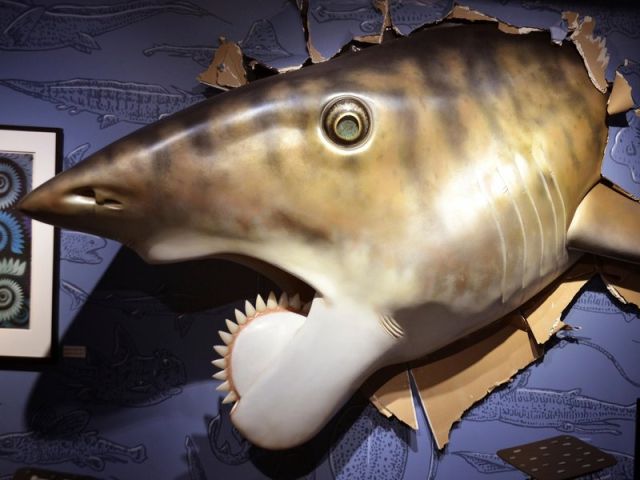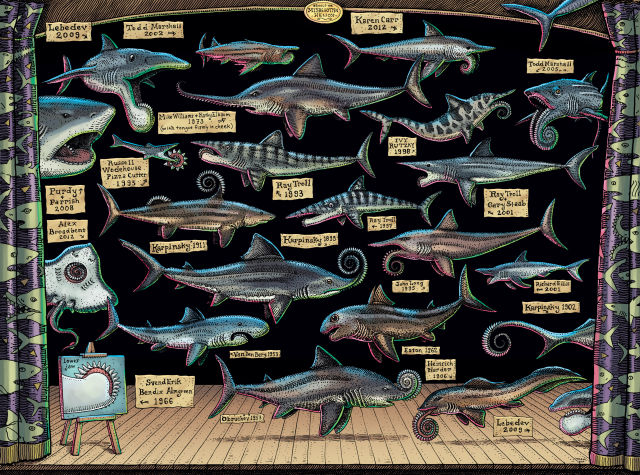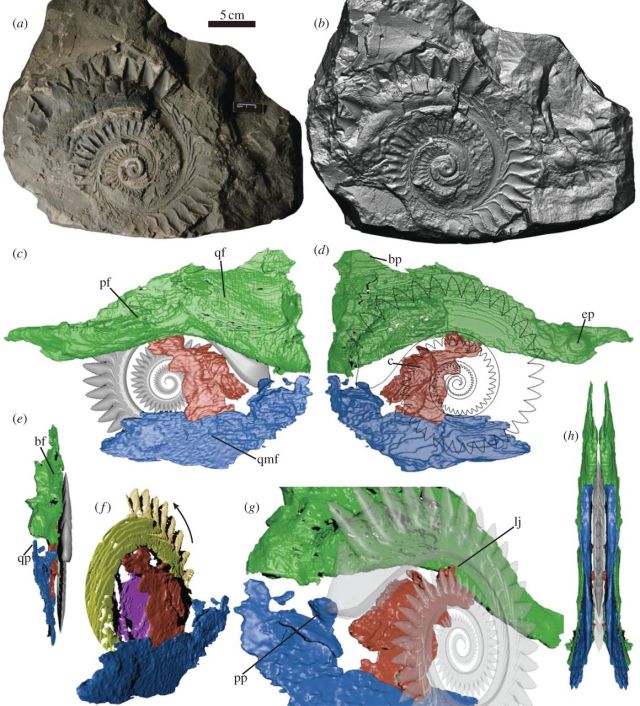Scientific Method / Science & Exploration
It takes an artist to capture the true weirdness of the ancient animal's face.

LOOK INTO MY TEETH AND DESPAIR.
Ray Troll, whose art show about Hilicoprion has been touring the US for the past three years, has been on the front lines of scientific research about one of the strangest fossils ever found. When geologist Alexander Petrovich Karpinsky discovered the creature's tooth whorl in 1899, at first he thought it was a kind of ammonite because the teeth looked so much like the ammonite's spiral shell.
Paleo expert Brian Switek writes that it took Karpinsky a little while to realize that it was actually part of a larger animal. Over the next century, many different paleontologists offered explanations for what it might be, including a defensive formation on Helicoprion's nose, a ridge on its back, or even sticking out of its mouth like a spiky, curled tongue.

Enlarge / All the different ways that scientists have tried to
explain where Helicoprion's spiral teeth were positioned.
a lot more than make art of this crazy fish. He's actually added to the
scholarship on it:
Troll’s passion, however, has served a purpose far beyond the aesthetic charm of a framed picture—it has shaped the scientific community’s knowledge of Helicoprion itself. Back in the mid-1990s, when he wrote and spoke with [paleontologist Svend Erik Bendix] Almgreen, Troll discovered that the scientist had published his hypothesis about the buzz shark’s physiology in an obscure paper in 1966. This knowledge remained hidden, lost to memory even to prominent paleontologists, until 2010, when an undergraduate student working as an intern at the Idaho Museum of Natural History got in touch with Troll.As a result, Troll began working with paleontologist Leif Tapanila, who used used CT scans to image a whole skull of a Helicoprion—revealing that the buzzsaw shape was actually part of its lower jaw, used for slicing food and pushing it toward the back of the fish's mouth. It seems that the teeth formed in the jaw next to the topmost part of the spiral, then gradually worked their way down and back into the jaw. Once there, the teeth would be absorbed into cartilage and eventually turned into teeth again. These scans became the basis for an article published in 2013 in Biology Letters, which also included some of Troll's artwork of the buzzsaw in its rightful place.

Enlarge / Here you can see the fossils that Tapanila put into the CT scanner, along with the structure they revealed.
Royal Society

No comments:
Post a Comment